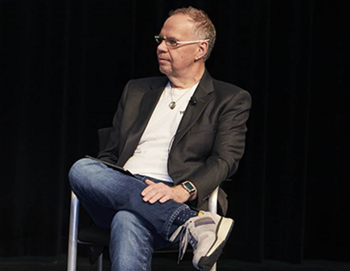Westpac is creating an "evolutionary architecture" - supported by "evergreen" technology platforms - that it says will enable the bank to be more responsive to change.
Group CTO David Walker will tell an FST financial services conference that the bank is hoping to create a “state of constant transformation”, instead of pursuing technology transformations with defined start and end dates.
To do so, it is deconstructing the large - "monolithic" - software systems that it uses to perform a number of operations and replacing them with applications that stitch together a number of smaller components.
Walker characterises this architecturally as a shift from “boulders to pebbles”.
“We’re breaking things down into components,” Walker said.
“That's where the ‘boulders to pebbles’ story comes from.
“We have a number of things that we're doing on that front, like our APIs, our microservices, [and] our micro-frontends.”
Walker said that the bank has built a collection of over 1000 APIs and microservices, which are discoverable by other development teams for reuse via the bank’s central development environment.
He used the FST presentation to reveal that the bank has already achieved a “3x component reuse factor” as of July this year.
Developer productivity had doubled since the bank started building out its “evolutionary architecture” and encouraging reuse of componentry; teams made 800 updates to products in the past year.
“We get roughly about three times reuse of our microservices and that's reasonably good. Some are in the multiples and some are a bit less, but an average of three is a pretty good outcome,” Walker said.
The bank is now turning its attention to developing a series of “micro-frontends” to power small but repeatable aspects of the user experience.
“Our micro-frontends are the next thing [to develop],” Walker said.
“These are things that build little journeys, like check my balance, or make a payment or login, and we're building these so that they can actually run not only across multiple different customer apps, but also [across] employee apps.
“We've already got three or four of these built and are continuing to build out more. We can see the reuse really, really coming along with those.”
Underpinning the “evolutionary architecture” are “evergreen” technology platforms, which require little ongoing change or intervention from an operations perspective.
“Evergreen is much more about the technology components themselves. We need to bring in technology that is self-stabilising and self-sustaining,” Walker said.
“We're now in a situation where we've got modern technologies that we can buy through the cloud providers, we can bring them in ourselves and we can keep these as ‘evergreen’ things that support themselves and run themselves, and we can apply patches universally across them, and so forth.”
The combination of an evolutionary architecture and evergreen systems should result in the bank becoming “built for change”.
“As we progress to this state, we get the organisation to a point where it's able to be nimble and responsive to customers’ [needs],” Walker said.
“That to me is the state of constant transformation that we're heading towards to meet those faster cycles [of change].”





.png&h=140&w=231&c=1&s=0)




















